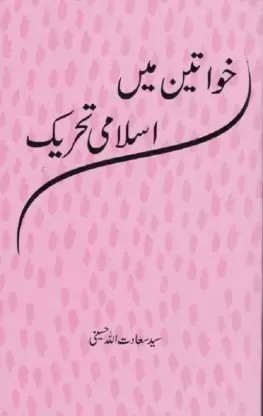The book written by Syed Sadatullah Husaini deals primarily with the global female issues. Being dedicated to his beloved mother,the writer very elaboratively defines the manifold problems that women encounter throughout the world. From broken families, dowry deaths, rape, gender inequality to live-in relationships, he has very well planted each issue in its proper place.
Along with the obstacles and hassles faced by women, the author has also tactfully placed a solution to every problem in the light of Islam. These answers to the problems are so clear and vivid that it becomes inevitable for the reader to adapt to the principles of Islam. Islam and its message is universal and it should reach extensively. Urdu, being a vernacular language, comes to naught among the masses. Hence, the need for an English review.
The book comprises 17 chapters at a stretch. These 17 chapters can be classified as some dealing with global women issues and the organisations that combat these, some Indian women issues and the organisations that work for the betterment of Indian women, Hindutva and their associations along with a few chapters on social morality. Each chapter barely extends to a maximum of 5-6 pages. The author starts his book with the global problem of broken families, live-in relationships and same sex families. He then very swiftly satisfies the reader by giving the Islamic perspective of family and sexuality, staying that the world has appreciated these lessons of Islam by mentioning the very existence of the Australian political party named The Family First Party. The crux of the book is that it has clearly made the reader understand that the last and final refuge of feminity lies in Islam.
An abstract on the global women issues and the organisations that deal with them would be incomplete without the mention of the Malaysian Sisters in Islam, the Sudanese Organisation run by Wissal al-Mahdi – wife of the Sudanese Islamist politician Hassan al-Turabi – where they run a three-point programme of educational upliftment of the females who adhere to Islam, their participation in every field of their choice and their complete social activism. Along with these, Sadatullah Husaini also praises the women organisations in Iran as explained by Mukhtar Masood in his writings of Lauh-e-Ayyam.
Shifting his focus on the issues faced by the women in our very own country, the author hints at the atrocities in the society by briefing about Surekha Bhotmange’sKhairlanji incident. He talks about domestic violence, female foeticide, intoxication induced crimes, sexual exploitation, sati, malnutrition, dowry deaths, rapes and prostitution. He also provides statistical data for all these issues. The renowned writer also very effectively provides a formidable plan map for solving these women issues.
The author has also dedicated a complete chapter to Hindutva. He enlists the various associations affiliated to the Hindutva agenda – namely the political BJP, the religious VHP and Bajrang Dal, the student organisation ABVP, the labour association as the Bhartiya Mazdoor Sangh. The writer then gives us a brief idea about the Rashtriya Sevika Samiti – the women’s wing of the Rashtriya Swayamsevak Sangh (RSS). Explaining the ideology of the Sangh, he describes the methodology of the Samiti as well. Mentioning Laxmibai Kelkar – the first Pramukh Sarsanghchalak, we get a clear view on fascism and the doctrine of the RSS.
Lastly, the eminent author has some prodigious lessons for us. He is able to motivate us in such a manner that after reading the book, we are convinced to set a vision and work towards its accomplishment. As tehreeki women, our association with an organisation is absolutely futile if we do not have dreams. Sadatullah Husaini has been able to kindle that spark.
The most captivating part of the book is that it explains as to how a woman has lost her feminity in the race of gender equality. In the modern world, she had to sacrifice her womanhood to prove her excellence. She has to compete with men – an absolute opposite gender for the world to acknowledge her mere existence. But in Islam, a woman can achieve the highest worldly position all by herself without moving an inch away from her feminine attributes.
Therefore, this book is a must read.
[Dr Amna Shabi is BHMS from Pune and Social Media and English Print Media In-charge of Ladies Wing, JIH Maharashtra]


